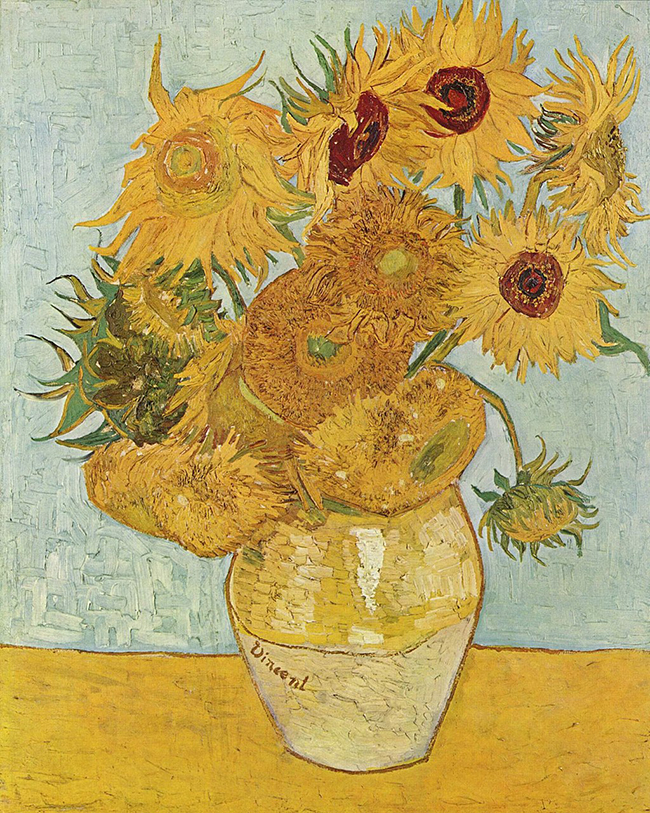Van Gogh’s “Sunflowers” series is a poignant exploration of beauty, vitality, and the transient nature of life. Through vibrant colors, bold brushstrokes, and intricate symbolism, Van Gogh transforms a simple still-life subject into a profound meditation on existence and human experience.

At the heart of the “Sunflowers” paintings lies the titular flower itself, which serves as a powerful symbol of vitality and the cycle of life. In these works, Van Gogh captures the sunflower in various stages of bloom, from bud to full blossom to withering petals. This progression mirrors the stages of human life, from youth and vigor to aging and decay. By depicting the sunflower in different states of bloom, Van Gogh invites viewers to contemplate the passage of time and the inevitability of change.
The sunflower’s association with the sun is another key element of its symbolism in Van Gogh’s work. As its name suggests, the sunflower is often depicted turning towards the sun, its petals reaching eagerly towards the light. This motif symbolizes hope, optimism, and the quest for spiritual enlightenment. Just as the sunflower seeks out the sun to nourish itself, so too do humans seek out sources of inspiration and meaning in their lives.
Color plays a crucial role in conveying the emotional depth of Van Gogh’s “Sunflowers” paintings. The artist’s use of vibrant yellows, rich blues, and deep greens creates a sense of energy and vitality, while also evoking the warmth and brightness of sunlight. These bold hues symbolize the beauty and abundance of the natural world, as well as the artist’s own emotional intensity and passion for his subject matter.
In addition to the sunflower itself, Van Gogh incorporates various other symbolic elements into his compositions. For example, the vase in which the sunflowers are arranged often represents the human vessel or body, containing and preserving the fleeting beauty of the flowers within. Meanwhile, the background landscapes, with their swirling patterns and dynamic brushwork, suggest the interconnectedness of all living things and the ever-changing nature of the universe.
One of the most striking aspects of Van Gogh’s “Sunflowers” series is its ability to evoke a sense of both joy and melancholy. On the one hand, the paintings burst with life and vitality, their vibrant colors and dynamic compositions celebrating the beauty of the natural world. On the other hand, there is a sense of transience and impermanence lurking beneath the surface, as evidenced by the wilting petals and fading colors of some of the flowers.
Ultimately, Van Gogh’s “Sunflowers” paintings serve as a powerful reminder of the complexity and beauty of the human experience. Through his masterful use of symbolism, color, and composition, Van Gogh invites viewers to contemplate the passage of time, the cycle of life and death, and the enduring power of hope and beauty in the face of adversity. As such, these iconic works continue to resonate with audiences around the world, inspiring awe and introspection in equal measure.

